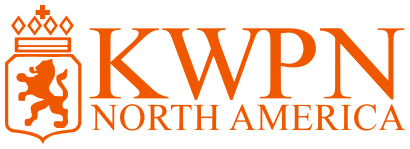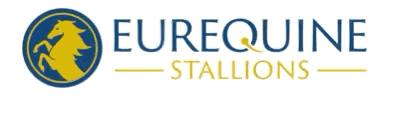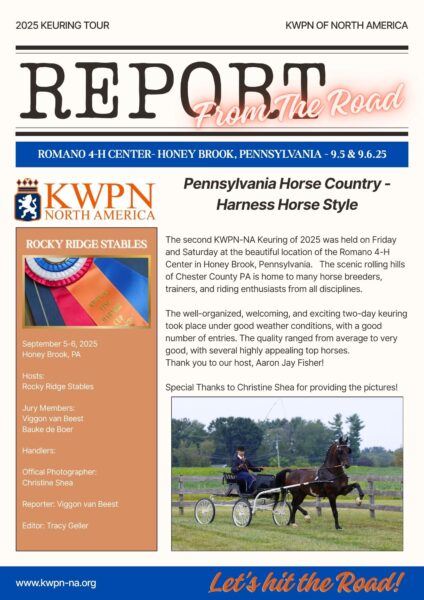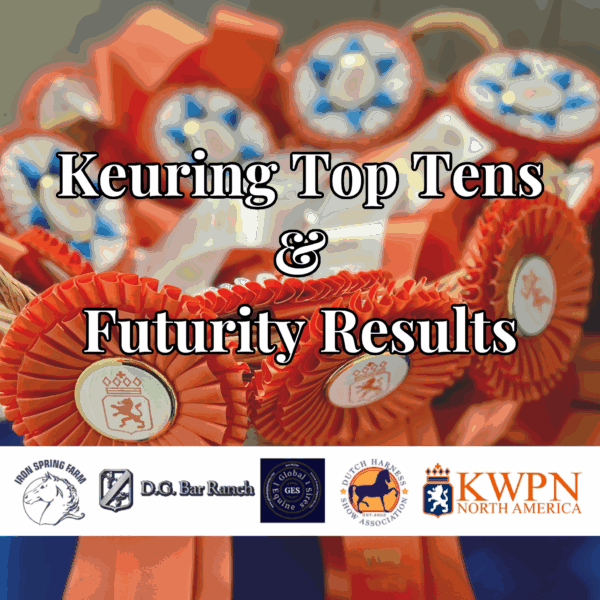
17 Apr Updated PROK requirements – part II
News
Home » News » Updated PROK requirements – part II
April 17, 2024
Updated PROK requirements – part II
Veterinary Advisory Committee gives recommendations on PROK
Following up on the decision to update the PROK requirements for stallions (see THIS article on that topic), the Veterinary Advisory Committee, consisting of renowned veterinarians and radiologists, has formulated several recommendations that the KWPN General Board has adopted.
Article by Charlotte Dekker – KWPN
The main objective of the KWPN is to breed horses that can perform at the highest level in sports. Ensuring the correct selection based on health characteristics is important to maintain the distinguishing feature of the studbook. For this reason, the approved stallions themselves must be sufficiently healthy, enabling breeders to make better choices and breed more sustainable horses.
Gold standard
The Veterinary Advisory Committee consists of members of the PROK committee (Gijs Jan van Selm, Bart Veldeman, Hans Peeters, and Henk van Campen), supplemented with practical experience via Arie Hoogendoorn, Don van de Winkel, and Jacques Maree. For the scientific basis and assessment, they are supported by radiologists A.J. van den Belt and Stephanie Veraa from the Faculty of Veterinary Medicine. As mentioned, this committee has examined the recalibration of the evaluation of the radiographic images. Veterinarian Henk van Campen explains: “The PROK examination, which stands for Project Radiographic Examination KWPN, has been in existence since 1997 and has given the KWPN a significant advantage in terms of health breeding goals. Other studbooks have largely copied this method of selection. We saw that this was slowly eroding our advantage. Additionally, breeding progresses in a certain direction, including health. Since 1997, only a few minor changes have been made to the PROK requirements. Therefore, it was time to assess PROK in light of today’s horse, so that tomorrow’s breeding product can also meet the high health standards of the KWPN. With this, we aim to establish a norm that will once again become the gold standard for the coming years, even internationally.”
Recalibration and incidental findings
The Veterinary Advisory Committee began by inventorying abnormalities and variations encountered in practice. Van Campen explains: “We looked at everything we encounter on X-rays that is abnormal, such as chips, flattening, and cysts. Then we looked at the degree of heritability and clinical relevance: there may be an abnormality, but how likely is it that the horse will have problems with it in the future? If, for example, an abnormality rarely or never leads to future lameness, that particular X-ray image is not clinically relevant, and there is no need to select for it as a studbook. For each abnormality, we have assessed its clinical relevance, determining whether it could hinder the KWPN’s breeding goal of achieving the highest level during the sports career. By compiling all possible information from practice and science, we try to reach a consensus on whether or not we want to select based on each skeletal part.”
Extra photos of fetlocks and stifles
This insight has led to several adjustments aimed at better alignment between the evaluation of the PROK radiographic images and the sports examination. One of the adjustments is the expansion of the number of required X-ray images, with four additional shots (two of the fetlocks, two of the stifles) being taken. Incidental findings with proven clinical relevance are taken into account in the assessment for awarding the PROK predicate. Van Campen explains: “Previously, the hind fetlock was only photographed laterally, and now we supplement that with photos from the front. The same applies to the stifles; we now also take extra photos from a different direction. These additional shots are mainly aimed at ruling out clarifications in bone structure, the so-called cysts.”
Weighing in genomic breeding values
The Veterinary Advisory Committee advises that in the case of class B or C in the hock (sagittal tibiakam class B-C, lateral trochlear ridge talus class B) and class B in the knee (lateral trochlear ridge femur), the osteochondrosis (OC) genomic breeding value should be considered. If the OC genomic breeding value is 100 points or higher, a stallion can be accepted for performance testing. This advice is based on the addition of genetic information represented by the osteochondrosis genomic breeding value. By combining the radiographic images with the OC genomic breeding value, the two measurement tools reinforce each other.
Change in date of X-ray imaging
Until now, mares and stallions could be X-rayed for PROK from April 1st of the year they turn two. This date will be moved for stallions to September 1st, meaning two-year-old stallions will be X-rayed five months later. The Veterinary Advisory Committee indicates that genetic reparative capacity between April and September can still affect the X-ray status. However, other parts of the skeleton also undergo changes during this early developmental phase of the horse. Furthermore, it is essential to have up-to-date X-ray images during the stallion selection process. For mares, a different arrangement applies: from April 1st to September 1st, 2024, there is the possibility to request the PROK examination under the regular conditions. From September 1st, 2024, the new conditions described above also apply to mares.
X-raying of the back and neck
The Veterinary Advisory Committee proposes initiating an extensive study to accurately investigate the relationship between the presence of Kissing Spines and clinical symptoms. Data collection is considered the primary task. Don van de Winkel explains: “In addition to abnormalities that pose a high risk of lameness, there are also abnormalities that may not pose a high risk to future sporting use but may cause problems in the event of sale. An example of this is Kissing Spines, which literally means that the ‘spinous processes’ of the spine can kiss each other: they touch each other. It is not unusual for these processes to touch; the space between them often varies anyway. If you look at the horse’s spine, it has a certain curvature. Additionally, the processes of the withers point backwards, at the last thoracic vertebra, the direction changes, and from the lumbar vertebrae, the tips point more forward. So, it is logical that at the deepest point of the back, the space between the processes is smaller, or they even touch each other. There is a large anatomical variation in this. Kissing Spines may not pose a risk in itself; problems can arise when there is a lot of bone reaction such as new bone formation or bone resorption. But even in that case, it may not necessarily lead to back pain; there are many degrees of severity possible. So, you have to be careful about drawing conclusions. What we want to find out is which degree will predictably lead to problems.”
Kissing Spines are assessed according to the research of Zimmerman, Dyson, and Murray, where X-rays of the spine are classified on a scale from 1 to 7. For stallion selection, classes 6 and 7 are no longer accepted. For mares, assessment of back and neck photos can be requested, but this is still outside the norms for obtaining a PROK predicate. Currently, selection based on neck photos is not conducted, but the committee intends to inventory what is happening within the population in the coming years, to make future selection choices based on that information. Van de Winkel states: “What genetic trends do we see in the abnormalities? Especially in the area of the back, we want to inventory and gather knowledge. However, we will select for significant abnormalities—grades 6 and 7 on a scale of 7. Because we don’t want breeding stallions with a deformed back in the industry. We will use the results of the inventory to look into the future regarding the heredity of the back, to determine if we may need to adjust genetic selection. Additionally, we will embark on a study to explore the relationship between various grades of back abnormalities and sports performance. Specifically, at what grade of back abnormality do we see a negative impact on sports results? Hopefully, this will provide us with a lot of useful information to keep the KWPN horse healthy: a very important quality criterion, alongside traits such as temperament and talent.”
Download this article in pdf HERE.
KWPN Manager of Breeding operations Ralph van Venrooij gave a presentation on this topic at the Annual Meeting in Ocala last month. Click HERE to watch.
These new radiographic requirements will also apply to future licensed KWPN-NA stallions. For additional questions, contact the office .









